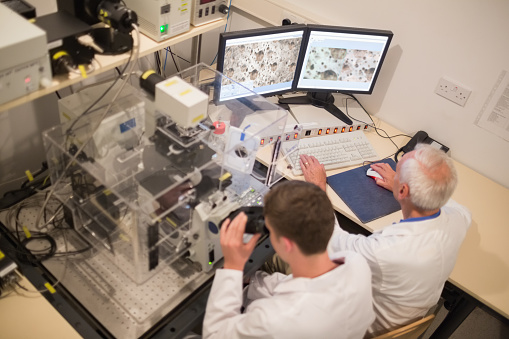 The mind has the power to create dreams during sleep. Why do we dream? Some say that dreams represent our unconscious desires, while others believe dreaming helps us process information gathered during each day. From a neuroscience approach, the rapid eye movement (REM) phase of sleeping is thought to be the place where dreaming happens.
The mind has the power to create dreams during sleep. Why do we dream? Some say that dreams represent our unconscious desires, while others believe dreaming helps us process information gathered during each day. From a neuroscience approach, the rapid eye movement (REM) phase of sleeping is thought to be the place where dreaming happens.
In a new study published in the British journal Nature, University of California, Berkeley (UC Berkeley) neuroscientists have discovered that flipping a switch can simply send a sleeping mouse into dreamland.
For the study, the researchers inserted an optogenetic switch into a group of nerve cells located in an area of the brain called the medulla. This allowed the research team to inactivate or activate the neurons with a laser light.
Activation of the neurons would send sleeping mice into REM sleep in a matter of seconds. REM is accompanied by the total paralysis of the skeletal muscles and cortex activation, which prevents people from acting out the dreams from each night. However, when the neurons were inactivated, the mouse’s ability to enter into REM sleep was reduced or eliminated.
Yang Dan, the study’s lead study author and UC Berkeley professor, commented on the findings: “People used to think that this region of the medulla was only involved in the paralysis of skeletal muscles during REM sleep. What we showed is that these neurons triggered all aspects of REM sleep, including muscle paralysis and the typical cortical activation that makes the brain look more awake than in non-REM sleep.”
In 94% of the experiments performed by the neuroscientists, researchers found that the mice entered into REM sleep within seconds of neuron activation.
“Because of the strong induction of REM sleep we think this might be a critical node of a relatively small network that makes the decision whether you go into dream sleep or not,” added Dan.
Researchers believe that the discovery will help them better understand the complexity of dreaming and sleep in the brain. It will also help neuroscientists learn why we dream by starting and stopping dreaming at will.
Since REM sleep changes are correlated with psychiatric disorders, like mood disorders, the study seems to give insight into emotional and mental health.
“We are hoping that studying the sleep circuit might lead us to new insights into these disorders as well as neurological diseases that affect sleep, like Parkinson’s and Alzheimer’s diseases.”
The researchers also found that activating the neurons in the brain would not affect wakefulness while the mice were awake; however, they would eat more than normal. GABAergic neurons are neurons that release the neurotransmitter called gamma-amino butyric acid (GABA). They are most active when mice are grooming or eating.
The research team used the optogenetic technique to test the REM-related GABAergic neurons in the medulla. They also used a drug to inactivate the neurons and found a REM sleep reduction, but the reaction was not as immediate and it would last for a longer time period since the drug would take a half hour to take effect and it would wear off slowly.
The researchers will continue to study the effect of the neurons on REM sleep and non-REM sleep.
Sources for Today’s Article:
Weber, F., et al., “Control of REM sleep by ventral mendulla GABAergic neurons,” Nature, 2015; 526(7573): 435; doi: 10.1038/nature14979.
Sanders, R., “Researchers find neural switch that turns dreams on and off,” UC Berkeley News web site, October 15, 2015; http://news.berkeley.edu/2015/10/15/researchers-find-neural-switch-that-turns-dreams-on-and-off/.
“Dreams: Why do we dream?” Medical News Today web site, July 31, 2015; http://www.medicalnewstoday.com/articles/284378.php.
